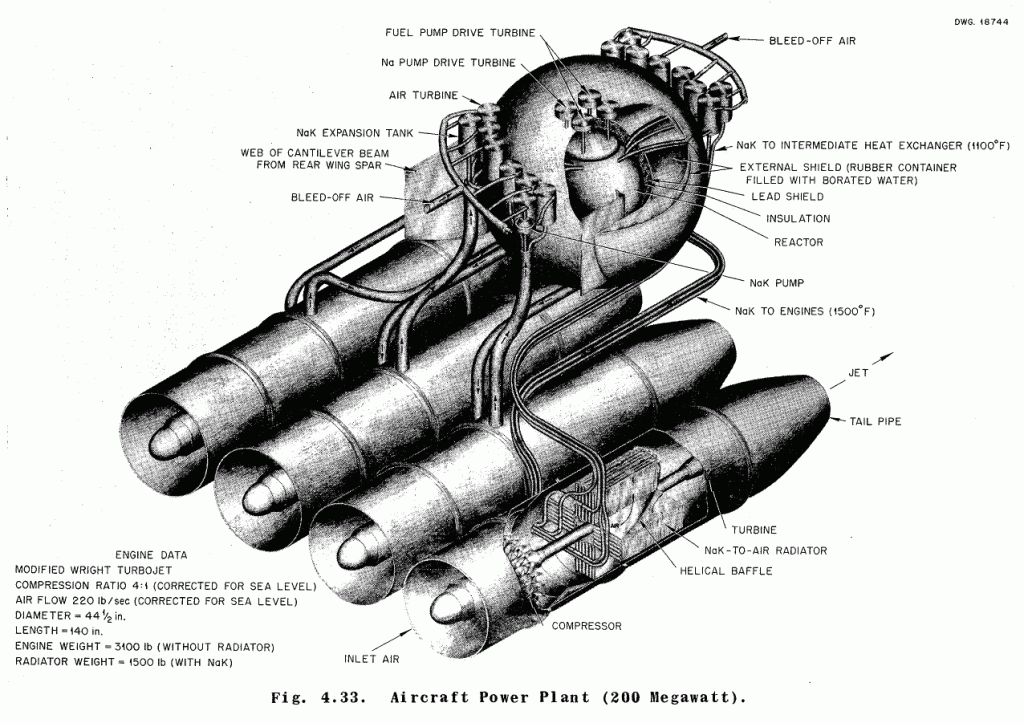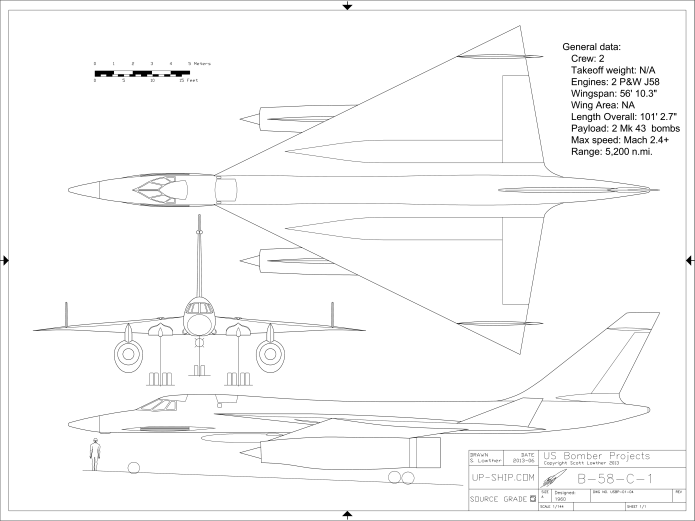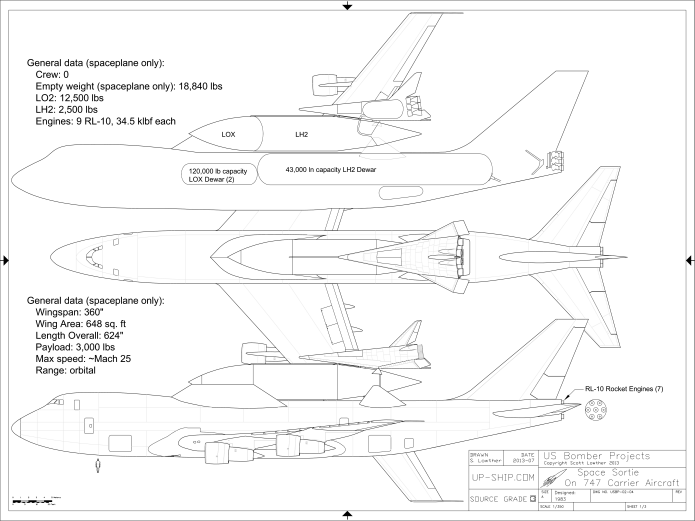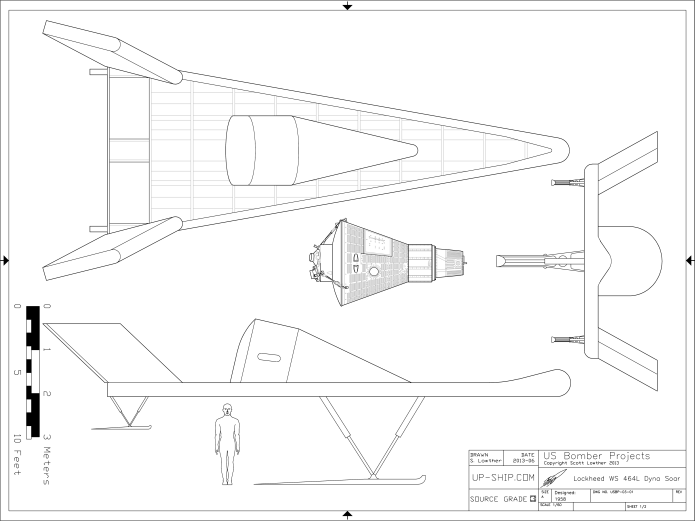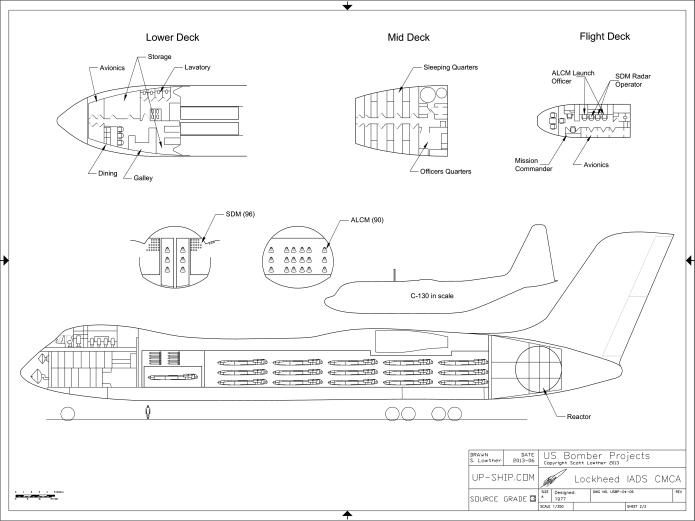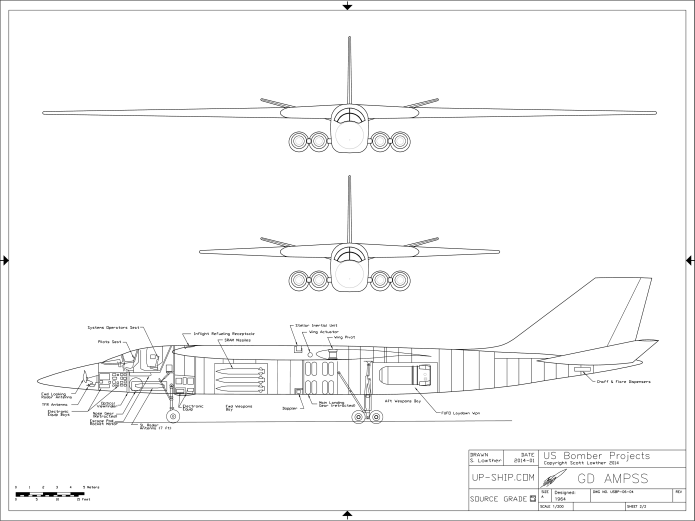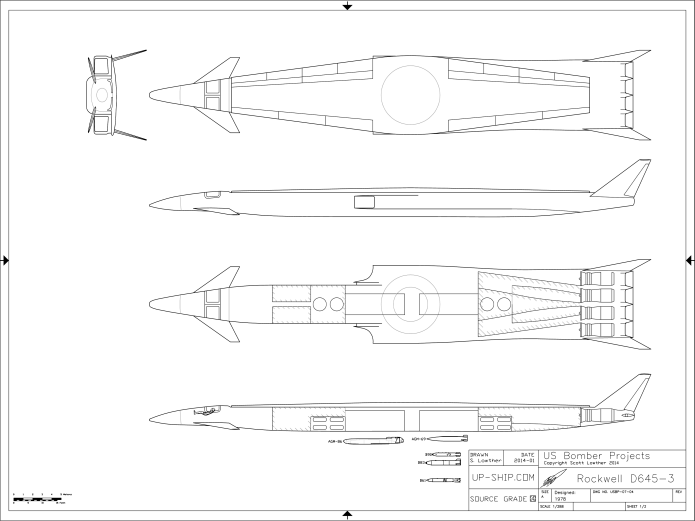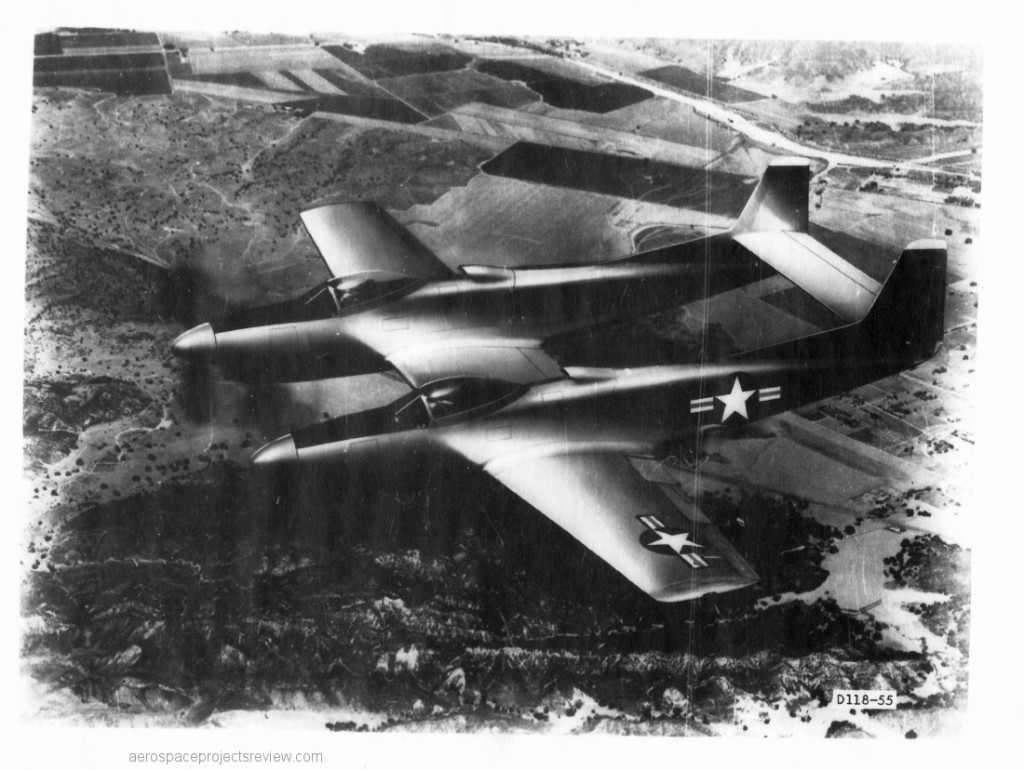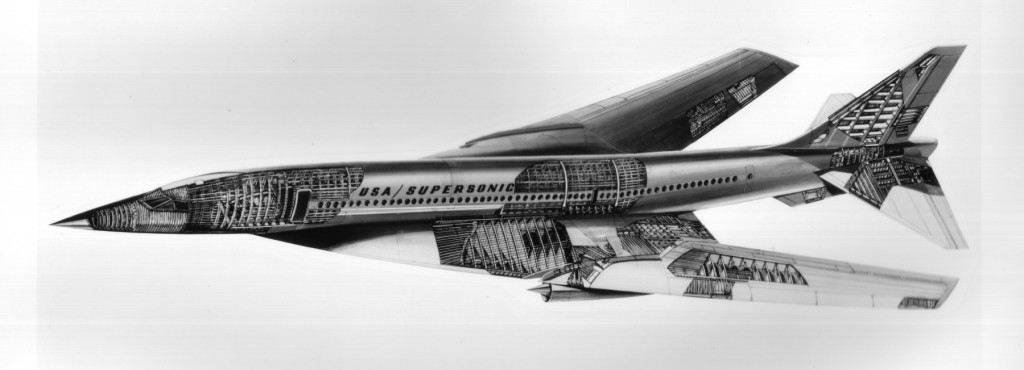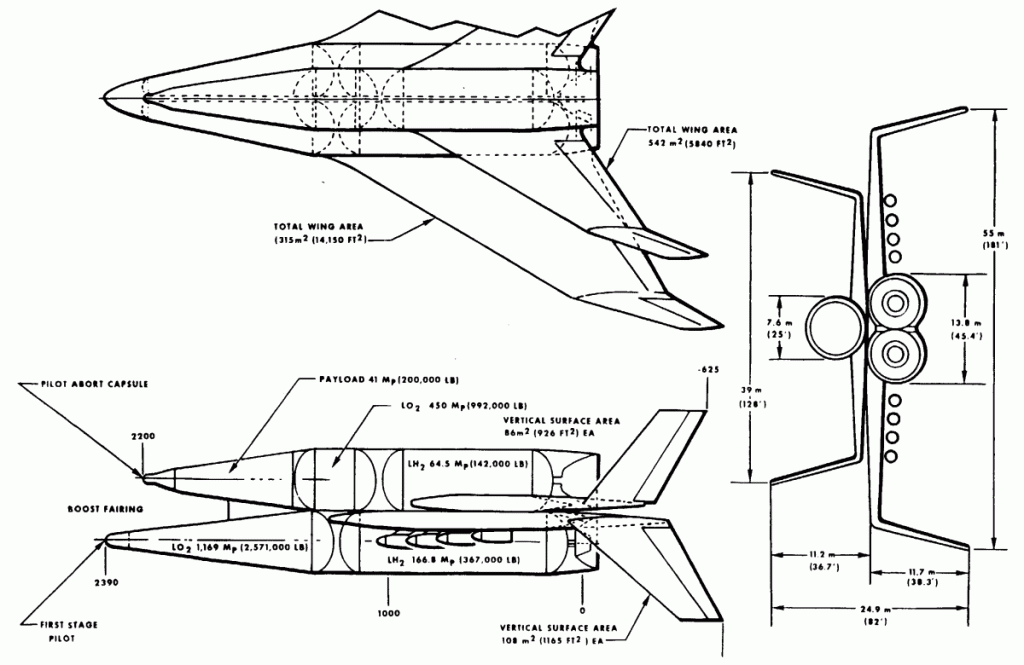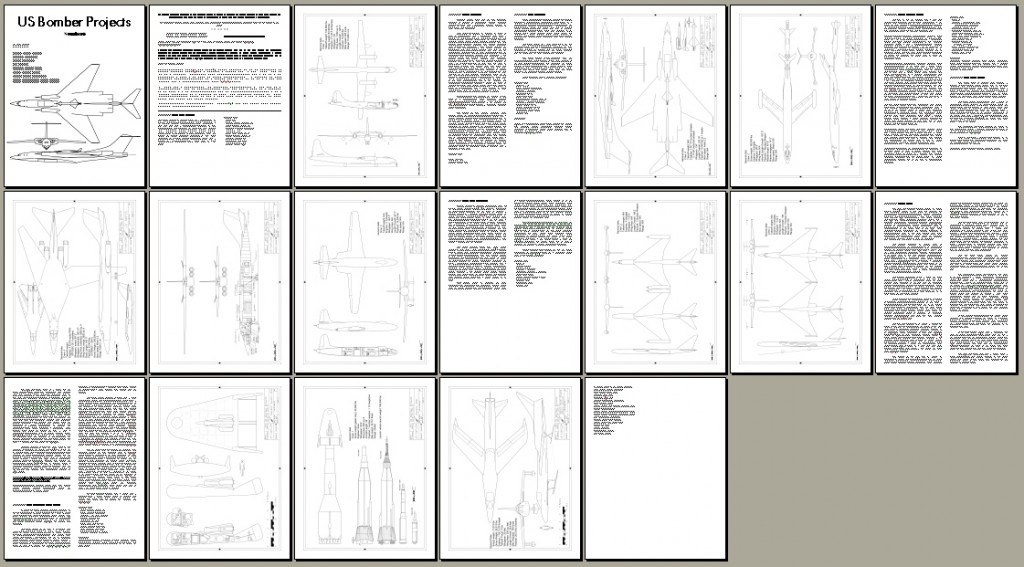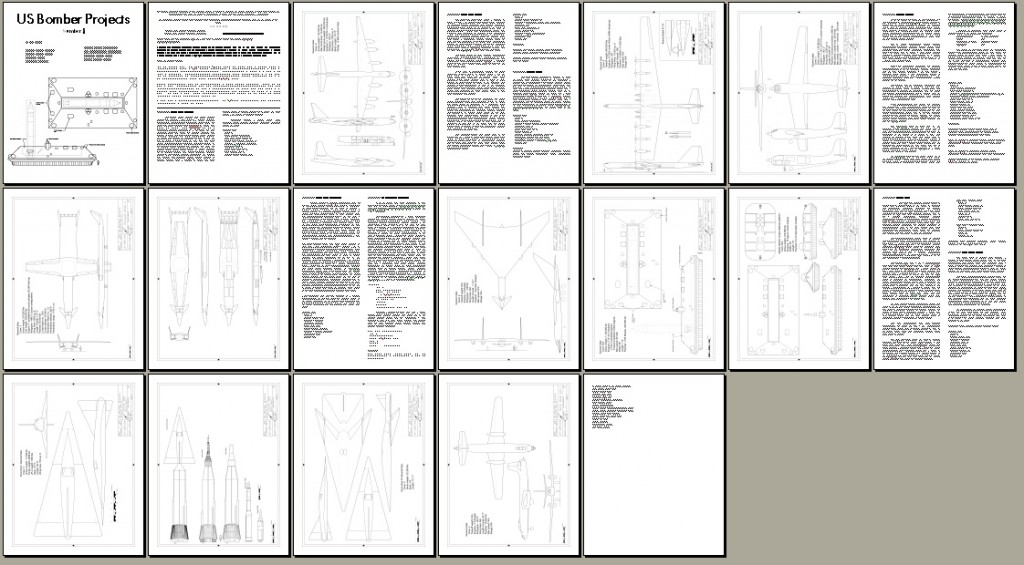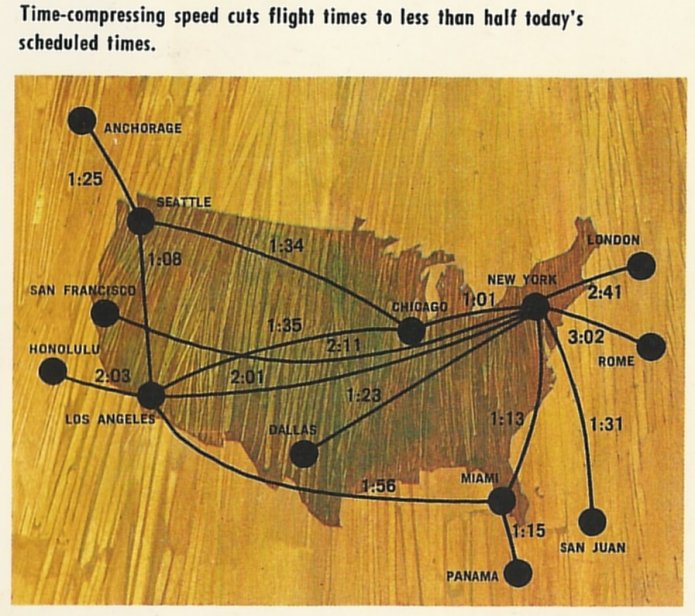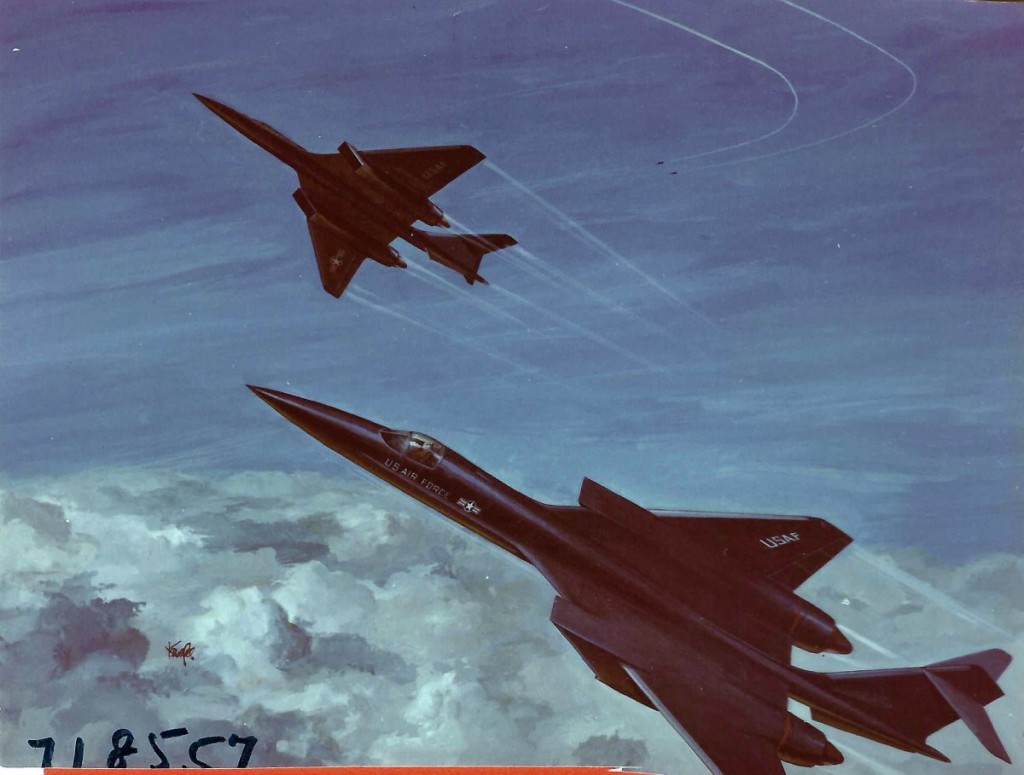I usually don’t just repost aerospace projects from other websites, but what the heck: An illustration of a 200 megawatt nuclear powerplant for aircraft. This single-reactor, four-turbojet engine would have been installed in a highly modified B-36 or B-60.
This powerplant is very similar to the General Electric powerplant intended for the X-6, which consisted of an R-1 reactor and a P-1 powerplant… four modified General Electric J47 turbojets. However, here the reactor is spherical rather than the R-1’s cylindrical, and the engines are described as Wright engines rather than GE. Wright was not a major designer of turbojets… this drawing might show engines based on the Wright J67, which was a license built version of the British Rolls-Royce Olympus. This nuclear turbojet concept is probably form fairly early in the design process.
The basic concept was simple enough. The reactor would replace chemical jet fuel by putting a heat exchanger where the turbojet would normally have a combustor. In order to get the heat from the reactor to the heat exchanger, a NaK (an alloy of sodium and potassium) would be used. NaK has the convenient feature of being liquid at room temperature (freezing at -11 Celcius), boiling above 785 Celcius. This means that in most conditions, even with the reactor off, the liquid in the pipes won’t freeze, and the liquid will stay a liquid, capable of carrying considerable thermal energy, at usefully high temperatures. On the other hand, NaK has the unfortunate problem of having a serious hatred for water and oxygen, merrily exploding in contact with either (especially at high temperature). If your nuclear engine springs a leak… watch out.
